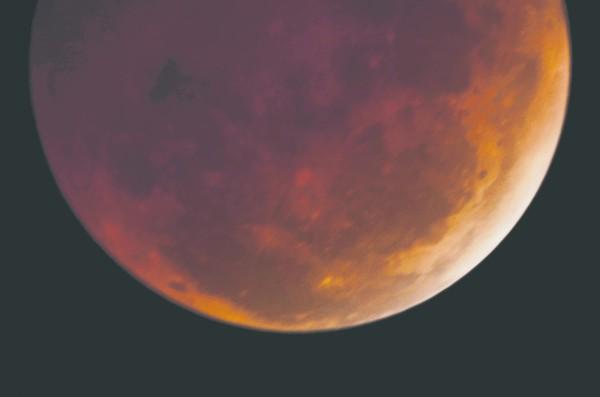Those who braved the cold, early morning hours on Oct. 8, 2014 were rewarded with a rare sighting of a total lunar eclipse. In total, the eclipse lasted from 3:25 a.m. until 4:24 a.m., while the penumbra was last visible at 6:05 a.m. What made this particular lunar eclipse unique was that it coincided with the rising of the sun in many parts of North America, allowing for a rare celestial phenomenon called a selenelion, according to space.com.
A selenelion eclipse happens just after moonset and before sunrise during a lunar eclipse, when it appears for a brief period of time that a partial solar eclipse is occurring simultaneously.
A lunar eclipse occurs when the Sun and Moon are aligned at 180 degrees from each other allowing Earth’s shadow to be displayed on the Moon. This astronomical positioning makes it impossible for an actual solar eclipse to take place. During a selenelion, the sun’s light is refracted through the Earth’s atmosphere in such a way that creates an image where both the Moon and the Sun are together, when in reality neither is present in the sky.
Refraction, the bending of light in Earth’s atmosphere, is also responsible for the presentation of the “blood moon” during an eclipse. Instead of Earth’s shadow completely blocking out the Moon, sunlight refracted through the atmosphere, which scatters shorter wavelengths of light such as green and blue and allows longer wavelengths such as red and orange to pass through onto the Moon’s surface.
According to NASA, another rarity of the Oct. 8 eclipse was that it was the second lunar eclipse in a trend of four eclipses within six months of each other called an eclipse tetrad. The first of the eclipse tetrad was on April 15 of this year. April 4, 2015 will be the date of the third eclipse, which will be succeeded by final eclipse of the tetrad on September 27, 2015. The 19 century Italian astronomer Giovanni Schiaparelli was the first to understand the fluctuation of tetrad successions. While in the timespan of three centuries, from 1582-1908, there were no eclipse tetrads, within the following three hundred years from 1909-2156, 17 tetrads will occur. While the last tetrad occurred in 2003-2004, the next tetrad will not occur again until 2032-2033.
A partial solar eclipse also took place on Oct. 23. The partial eclipse was visible in Central Oregon from 12:38 p.m. through 4:52 p.m.
Michael Gary | The Broadside
(contact: [email protected])








